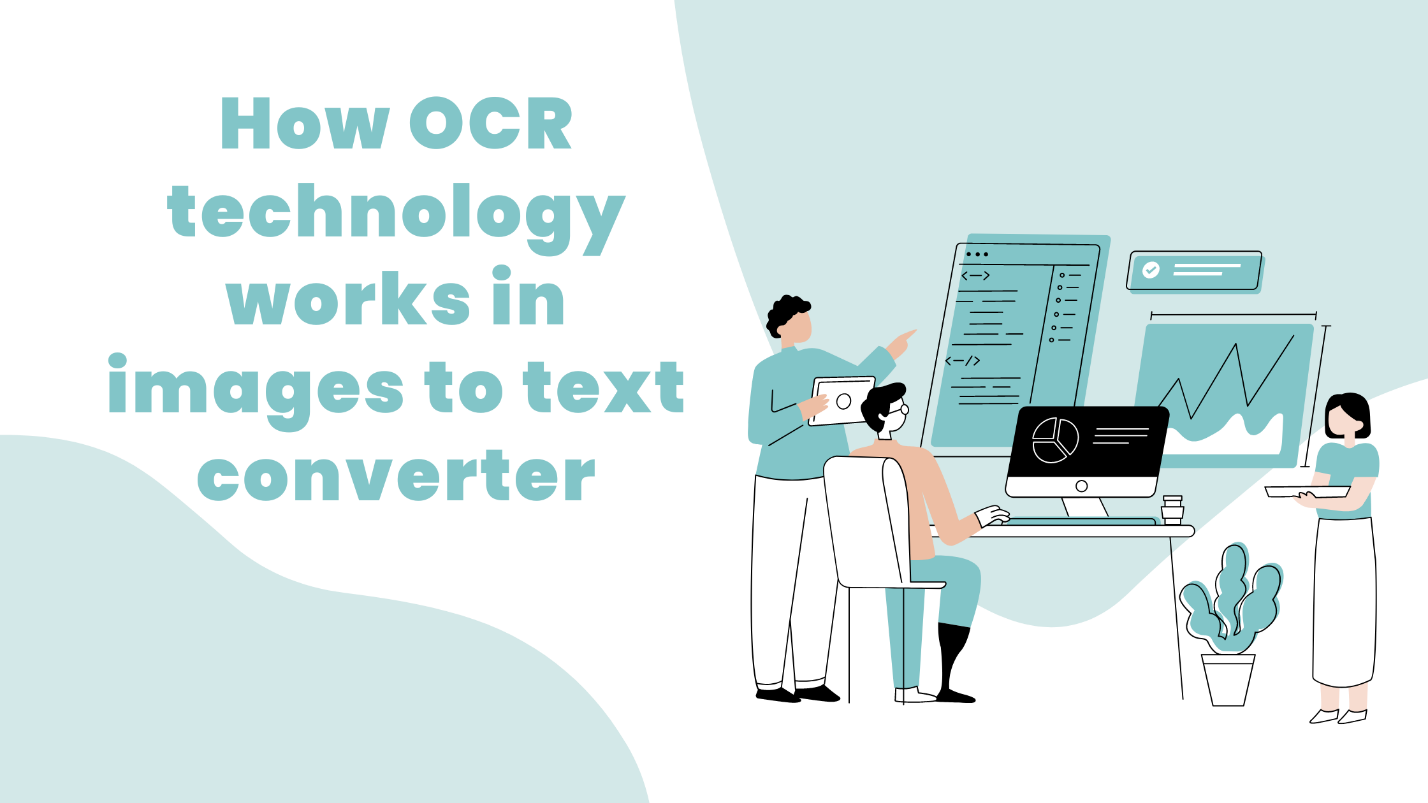Indeed, data processing and data entry has become easier with the assistance of OCR technology. It works effectively to extract text from any image file, providing the user with editable and searchable textual data.
If you want to know how OCR technology works to convert images into text then you will need to read this article.
We have discussed everything you need to know about this powerful technology that is extremely helpful for digitizing books, notes, log files, and other official documents.
What is Optical Character Recognition Technology?
OCR – Optical Character Recognition is an advanced technology that facilitates the extraction of written data from images.
For instance, there is an image or a scanned document with some text written on it. You cannot edit or copy the text from the image, right? You need to convert the image into text format which can be edited, searched, and copied. This can be done using OCR technology.
You can process the image through the OCR tool so that the textual data written on it can be extracted.
Let’s make it simpler. You have textual content in the form of a JPG/PDF file. Run it through the OCR and you will get it in the form of TXT/DOCx file.
How OCR Helps Image to Text Converters?
The OCR technology has a wide range of uses, the most important of which is image to text converter.
Typically, the OCR engines are tailored into domain-specific tools (which can be used for any specific purpose). For instance, it can be used to design software’s which can either be used to digitize handwritten documents, validate CAPTCHA anti-bot systems, or assist visually impaired computer users.
Take into account that the OCR technology is widely used for the following purposes:
- Data Entry
- Book Scanning
- Corpora Collection
- Automatic Number Plate Identification
- Passport Identification
- Business Card Information Extraction
- Automatic Information Extraction from Insurance Documents
- Traffic Sign Recognition
How OCR Works to Extract Text from Images?
Firstly, take into account that the OCR technology has 4 different types which are as follows:
- Optical Character Recognition (OCR)
- Optical Word Recognition (OWR)
- Intelligent Character Recognition (ICR)
- Intelligent Word Recognition (IWR)
Each type of OCR technology has its own implications and applications. Anyhow, the most commonly used type is optical character recognition which the majority of the online tools employ to facilitate “image to text converter”.
The OCR technology basically works in a 3-step process to extract from images. Thus, if you use an online tool that uses optical character recognition then it will perform the following functions in a row:
Document Analysis
The OCR technology carefully analyzes the image to understand the layout of the text. It helps to determine the areas on which the text is written and find accurate information about formatting elements that comes in handy at the end of this process.
Character Recognition
Once the areas for text recognition are defined, the OCR technology moves forward to recognizing each character written on the image. Thanks to its extensive database (multilingual dictionary), OCR takes no time to identify the words including special characters and unusual fonts.
Text Extraction
When the characters are recognized, the OCR technology works effectively to extract each word — in the same layout and structure which it identified during the document analysis. The text is restructured and then displayed on the screen so that the users can copy it or download it any desired format.
Does OCR Work Effectively to Extract Text from Images?
The answer to this question is indeed “yes” but there are some factors that contribute to the effectiveness of OCR technology.
The factors that determine how well the text can be extracted from the image includes:
- Functionality of the OCR tool
- Language of the text
- Resolution of the image
- Size and style of the fonts
- Background of the image
- Layout and structure of the text
The most important thing is that the OCR tool must ensure high-performance so that the images can be converted into textual data without any errors. The higher the functionality of the tool, the better the quality of the result.
How to Choose Image to Text converter?
There are many people, especially the data entry specialists, who ask this question.
The answer is simple: choose the OCR tool that offers the highest-level of precision.
Whether it’s an online tool or a software application, the image to text converter must be based on the advanced OCR algorithms.
More clearly, you should make sure that the OCR tool you choose offers the following features:
- Extensive dictionary
- Multilingual support
- Accurate document analysis
- Quick character recognition
- Error-free text extraction
- Multiple format support
You can find a variety of tools that use OCR technology to extract text from images. Just ensure that the tool you leverage doesn’t compromise on the text quality.
It would be better if you go for a tool that features advanced functionalities such as auto-enlargement of the text (in case of low resolution) and auto-rotation of the image. There are many other features available you can leverage to streamline and boost image to text conversion — just look for the right tool.
Conclusion
OCR technology facilitates the recognition of characters that are written on scanned documents or image files. When employed with edge-cutting algorithms, it enables an online tool to quickly analyze the image file for the identification of the text format, language, and words. In simple words, OCR uses its extensive database to recognizes each character and then extract them in the form of a well-structured text — as written on the image.
Lucas Noah, armed with a Bachelor’s degree in Information & Technology, stands as a prominent figure in the realm of tech journalism. Currently holding the position of Senior Admin, Lucas contributes his expertise to two esteemed companies: OceanaExpress LLC and CreativeOutrank LLC. His... Read more
